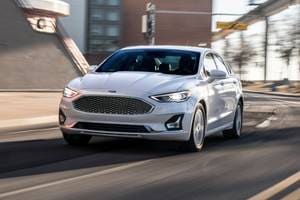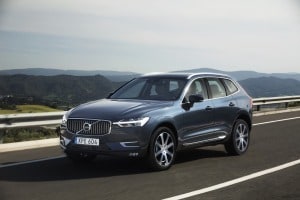Marchionne and the Chrysler Resurrection on 60 Minutes

Chrysler achieved something of a coup a couple weeks back with the airing of a piece on 60 minutes. Generally, a segment on 60 Minutes would send industry execs running for cover, but this piece was positively gushing in its portrayal of the Chrysler "resurrection."
Keen industry observers will note they got a few details wrong. For example, the new Dodge Dart was hailed as 40-mpg vehicle; a reference to its CAFE rating, not its likely EPA combined figure. (60 Minutes is not the only organization to be confused by the industry's fragmented figures for fuel efficiency. A growing problem I noted earlier.)
Details aside, the Chrysler story is remarkable. Just a few years ago, most would have bet against their survival. Today they have been notching up 40% year-over-year sales gains. Just how they have been able to pull this off would make for a compelling story. Unfortunately it is a story that 60 Minutes barely began to tell.
They did skim over a few of the key points. The piece itself was centered on Sergio Marchionne. This makes sense because without Sergio, there would be no Chrysler today. But what exactly is it that Sergio has done? What are his secrets?
To draw firm conclusions we really need to allow a few more years to pass. But even now, I see two broad areas to study: Let's call them the two secrets to Chrysler's success.
We can start by thinking about most car companies. Like many large businesses, bureaucracy is a fact of life. Career success is typically dependent on refining political skills. Accountability for delivering results that move the business forward is often missing. Undermining your colleagues can be an art form.
Decision making is slow in most car companies. Thinking moves at a glacial speed. Fresh ideas are resisted; adopting them is just too much effort. Because of the industry's size, efficiency of execution is often valued more highly than effectiveness of results. (This is especially obvious when you look at some of the vanity metrics the industry tracks assiduously; metrics that don't tie to vehicle sales at all.)
Considering all this, it should be no surprise that great product is viewed as the surefire pathway to success. "It's all about the product" is an idea that is easy to grasp and there are plenty of examples to learn from (like Chrysler's minivan in the mid-eighties).
Great product is a key foundation for success, but is it enough? These days it is looking more like the price of entry, rather than a competitive advantage.
This is what makes Chrysler so interesting. Not to say that Chrysler hasn't improved its product. Over the past few years, they have made careful use of limited resources to freshen their product in ways that consumers appear to value. But product alone does not account for Chrysler's rebound.
Thinking about the industry as a backdrop, here are the two big "secrets:"
Organization
The first secret to Chrysler's success is the company's organization. 60 Minutes skimmed over some of this, noting the 4th floor executive "hub" had been relocated from the distant 15th floor. And they also noted Sergio's 26 direct reports, designed to remove bureaucratic layers and speed decisions. They covered his eye for talent, often finding it deep within the organization. And they mentioned the weekend enclaves where issues are discussed and decisions made.
But they missed the unusual way the company itself is organized: Key leaders at Chrysler hold multiple roles. (For example, a division head might also be responsible for product planning across the company.) No other car company has anything similar, so why do it? They do it because it is a design that forces executives to depend on each other as opposed to competing with each other. It is an attempt to push politics aside.
Another difference: Accountability. We have already seen examples at Chrysler where managers who didn't deliver were asked to leave. There are also cases where a manager has been fired to make a point. This seems brutal, and I suppose it is. It has also served to put the "old" culture under pressure, focusing attention on what matters, and away from what does not.
As I said earlier, it is still early in the process, but the result of these efforts could be a car company where the organization itself is a source of competitive advantage. How many car companies can credibly make this claim?
The "what" of the Chrysler turnaround
The second secret relates to the "what" of the Chrysler turnaround. Specifically, what decisions are being made?
This is an industry with a body of accepted thought. Ideas that are consistent with this thinking generate easy support. Vast sums are spent on programs with goals that align with this accepted thinking — often without much justification. For example, think about the hundreds of millions spent each year chasing outmoded ideas on customer satisfaction.
Sergio seems willing to break these "rules." There are two examples. The first is a case where the rules were broken out of necessity.
A couple years back, when still engaged in a daily fight for survival, Sergio was pushing to shatter the organization's dependence on retail incentives as a way to hit production-driven sales targets. Every automaker uses incentives. So this was not unique to Chrysler, but their spending per vehicle was typically at the high end of the scale.
Removing this dependence is not easy. Incentives have the virtue of working. They can produce a predictable lift in sales, and quickly. The problem is that incentives are hugely expensive. When offered to consumers, incentives are typically retroactive. That is, they apply on sales you would have made anyway, as well as on any added sales. This means that incentives incur a huge incremental cost. (The cost of a typical program when weighed against the extra vehicle sold can easily be $10,000 to $20,000 per vehicle, or more.)
There were a couple of elements to Chrysler's plan. The first was to muster up the fortitude to take the plunge, cut incentives, and allow retail sales to "float" to a more sustainable (and affordable) level.
The second was to shift any remaining excess production to fleet sales. This was a touchy subject at the time. Another of the industry "rules" is that fleet sales are a sign of weakness; they undermine the value of a manufacturer's product resale values, which cuts residual values making leasing more expensive.
Chrysler's fleet sales did jump up for a time (hitting as high as 50%) but netting it out the company came out ahead. The reliance on ever-higher incentives was broken. Even the shift to fleet sales proved to be a shrewd move because new vehicle sales had plunged. This was triggering a growing shortage of used vehicles and their prices were climbing, so the risk of lower resale values/lower residuals was not a factor.
Fast forward to today. With refreshed product hitting the market, Chrysler has been able to cut back on fleet sales (now around 30%), and still show incentive cuts of 25%, plus sales gains of 30-40% year over year. This is the automotive equivalent of defying gravity.
In this second example the rules were broken by choice. Think back to the Super Bowl in 2011. Chrysler featured a two-minute spot for the new Chrysler 200. Car advertising is an area where the rules are well established; Show lots of "hero" shots of the car is the big one. Play up the vehicles key advantages is another.
Yet the Chrysler 200 spot barely showed the vehicle at all. The voiceover talked more about Detroit and the auto industry with little about the 200.
The spot broke all the rules, yet something about it struck a nerve. It resonated on an emotional level with a message that was exactly right for the moment. Even though the spot barely featured the 200, consideration and purchase intent for the vehicle both soared.
This kind of exceptional advertising is very hard to do. Usually those who try, fail. Most importantly, it can only be achieved by being willing to break the rules.
For challenger companies like Chrysler, breaking rules is especially important. Odds are that doing the same things that everyone else is doing won't work. You are reduced to trying harder when others are already further ahead or have more money to spend.
Of course, anyone can simply break rules. The trick is to know which rules to break.
In one of the first meetings I had with Sergio he shared something that has stuck with me. It was his statement that he is most intrigued by what he doesn't know. This signaled an obvious curiosity I have found to be rare in general, but common with effective leaders.
More importantly, he is not lulled by assurances of competence. He has a nose for areas of corporate weakness, viewing them as opportunities.
For Sergio, ideas can come from anywhere. "Not invented here" thinking is so pervasive in the auto industry we could have invented it. It is something for which Sergio seems to have little patience.
And a final note on the 60 Minutes interview: They described Sergio's long work days, routinely starting at 3:30 am and running into the evening, seven days a week. A grueling pace he expects his key lieutenants to at least try to match. Why does he do it? (Aside from the fact that this pace is another competitive advantage — at least as long as it can be maintained.) Listening to the interview, Sergio talked about how "he" paid a heavy price for government TARP funding. And how Chrysler had reached a point where "he" could recover from one flubbed product launch. (Od course, in the interview, he said "I.")
He referred to Chrysler as "I." This is common with entrepreneurial individuals. Work is viewed as an extension of themselves. In other words, the long hours aren't even viewed as work. They are almost a form of expression.
This raises an obvious concern. What would happen to Chrysler if something were to happen to Sergio?
Putting this aside, he is one of the few executives I have met that has a firm philosophy or a set of ideas that is original. More importantly, these ideas are rooted in what works. (I am reminded of Ford's Jac Nasser, another auto executive with fresh ideas — or at least fresh to the auto industry — but ideas that lacked a real world validity.)
Whether these ideas are enough for Chrysler to thrive in an increasingly competitive industry remains to be seen. But they sure make Chrysler the auto company to watch.





